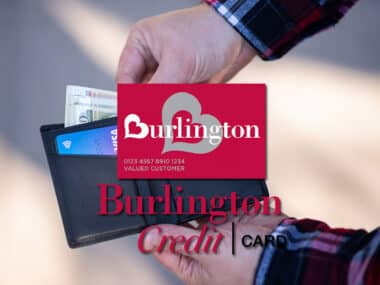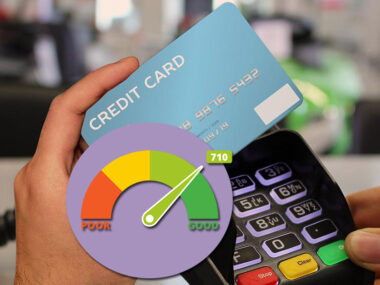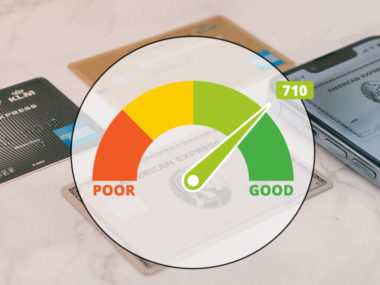Credit scores reflect a person’s ability to pay off debts and handle financial responsibility. Experian classifies the numerical credit scores into five categories: Very Poor, Fair, Good, Very Good, and Exceptional.
- 300 to 579: Very Poor.
- 580 to 669: Fair.
- 670 to 739: Good.
- 740 to 799: Very Good.
- 800 to 850: Exceptional.
A credit score of 500 falls into the category of “Very Poor” and reflects financial inconsistencies. A person with a 500 credit score likely struggles to pay off debts (for many reasons).
If you’ve recently checked your credit score and found your score has fallen to 500, don’t panic; with diligent effort, you can increase your credit score to an acceptable range.
Table of Contents
Why Your Credit Score Is 500
A credit score of 500 is low, suggesting that you have multiple faults in your credit history. From bankruptcy to repossession, your credit history has a dark past. This section includes three possible reasons why your credit score is 500 and how you can remedy it.
Multiple Delinquent Accounts
A delinquent account is an account with unpaid debts. If you only have one delinquent account less than a few days late, it’s unlikely to affect your credit score severely. After accumulating several unpaid debts over 30 days past-due, your account will begin suffering.
Ignoring these accounts is the worst thing you can do. If you let the accounts simmer, the lender could choose to sue, resulting in severe damage to your credit.
To avoid worst-case scenarios, pay off all outstanding debt as quickly as possible. Depending on your lender, you may see an immediate rebound once the delinquent accounts clear.
Bankruptcy
Claiming bankruptcy can drop an Exceptional credit score to Very Poor within a single sweep. A person who is unable to repay their outstanding debts can claim bankruptcy and file a bankruptcy petition.
The bank assesses the person’s assets and uses them to repay the debts. Bankruptcy allows the debtor to start fresh; however, the effects of bankruptcy tank their credit history for the next decade and make it difficult for the debtor to take out loans while their credit recovers.
Time heals bankruptcy, and there’s little you can do to speed the recovery other than keeping your account in good standing. You can also take out a secured credit card to begin building a new credit history.
Foreclosure
If you’re unable to pay back debts and the lender initiates a case, you could be forced to foreclose your home. The lender takes control of your property and sells the house to pay back the debts you owe. This process could drop your credit score by over 100 points, easily bringing your total credit score to 500.
Like bankruptcy, there’s little you can do to speed the healing process. You will want to keep several credit lines open and spend a small amount on each card to establish trust with lenders again. As you begin healing your credit, be extremely diligent in paying off even the smallest debts long before the deadline arrives.
What Can You Do With a 500 Credit Score?
If your credit score is in the low 500s, your best option would be to rebuild it rather than take out new loans. Once your score is higher than 600 and is in the “Fair” range, you’ll have more options for borrowing. If you need a credit card or need to borrow money, you have three options available.
FHA Loan
A Federal Housing Administration loan is a government loan created for low-to-moderate-income borrowers and for those with low credit scores looking to buy a house.
If you have a Fair to Good credit score, you only need to put 3.5% down on the home and can borrow up to 96.5% of the home’s value. With a 500 credit score, you must put 10% down before you can buy the house with an FHA loan.
Secured Credit Card
With a credit score of 500, you can apply for a secured credit card with an 18% interest rate. These credit cards work similarly to debit cards but focus on building your credit (something a debit card can’t change).
The issuer of a secured credit card continuously reports your actions to the credit bureaus each month, ensuring that your credit score steadily increases.
Non-Qualified Mortgages
If you can’t pay the down payment for your FHA loan, you could go through a non-qualified mortgage lender. A non-qualified loan is a loan that doesn’t meet the standards of a Qualified Mortgage, either due to the borrower’s income or credit score.
Some non-qualified mortgages don’t require the borrower to verify an income or debt record and are considered “no paperwork loans.” Borrowers interested in non-qualified loans should expect interest rates as high as 6.5%.
How to Improve a 500 Credit Score
No matter why your credit score has dropped to 500, you can repair it with the right tools and enough effort. If you feel overwhelmed by the tasks ahead, you can use a credit repair company to assist you as you lift your credit score.
Improving your credit won’t happen overnight, and it’s important to be patient as you work your way back to creditworthiness. This section will help you know where to start.
Make Your Payments on Time
Missing a payment or delaying a payment could decrease your credit score more than you might initially assume. To improve a credit score of 500, you need to make it a goal to pay off debts sooner rather than later — don’t wait for the payment deadline. You should also avoid taking on more debt and focus on paying off current debts.
Reduce Your Current Debt
Credit utilization plays into your current credit score. If you utilize a high percentage of your total available credit, your credit score could suffer.
For example, if you have $2,000 available in credit and you have $1,000 in debt, you’re utilizing 50% of your credit limit. Credit experts recommend that you utilize less than 30% of your credit limit to maximize your credit score.
Use a Secured Credit Card
Secured credit cards are tools specifically meant to help borrowers improve their credit scores. With a secured credit card, you can begin building trustworthy credit that the lender can report monthly to credit bureaus.
To use a secured card, you must put down a deposit. You can then “borrow” the amount that you’ve deposited. If you’re unable to pay back the borrowed amount, the lender will take your deposit. In a sense, you’re prepaying your credit, reducing any risk of a missed payment.
Dispute Mistakes
While improving your score, you will need to oversee your credit history and dispute any mistakes. Mistakes that might appear on your credit history include:
- Missed payments;
- Bankruptcy records;
- Unnecessary hard inquiries;
- Instances of identity theft.
Disputing mistakes can lift your credit score, especially if the inaccurate information is serious.
To dispute an error, you will need to send a letter to the credit reporting company and explain the mistake — you will need to provide documents proving your dispute. Once verified, the credit reporting company will strike the error from your credit history.
Image Source: https://depositphotos.com/





